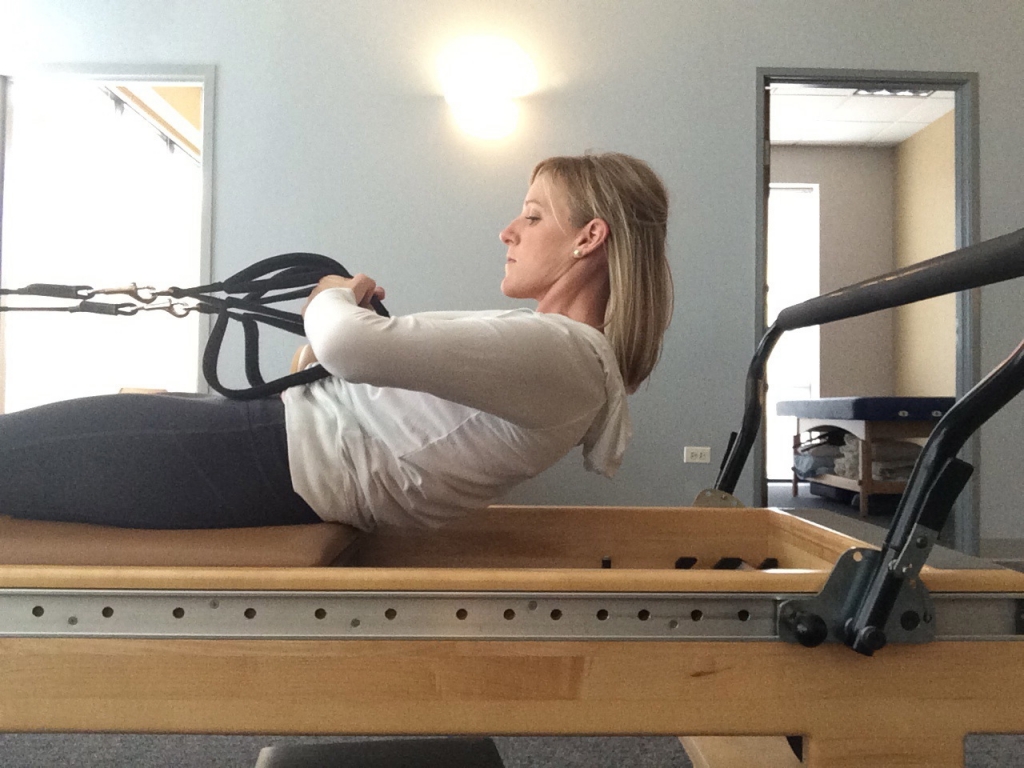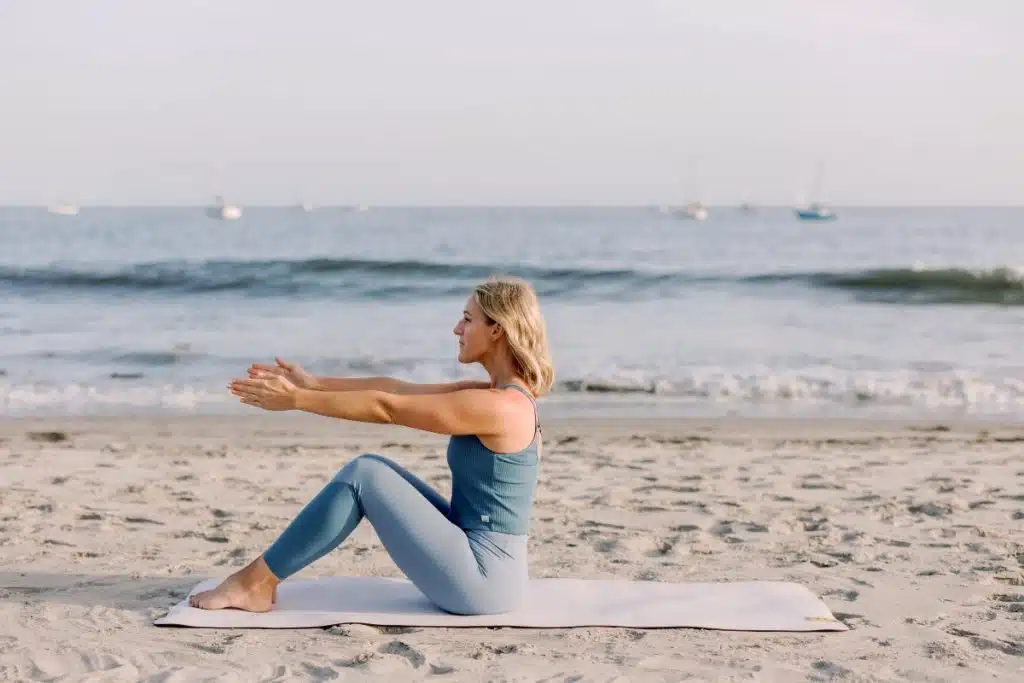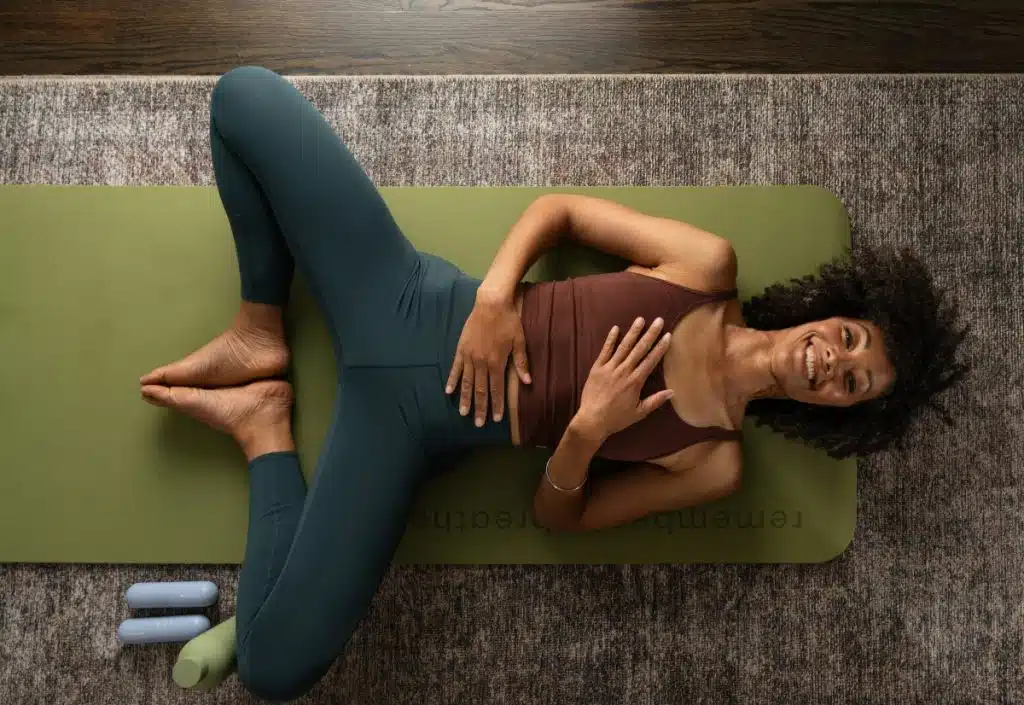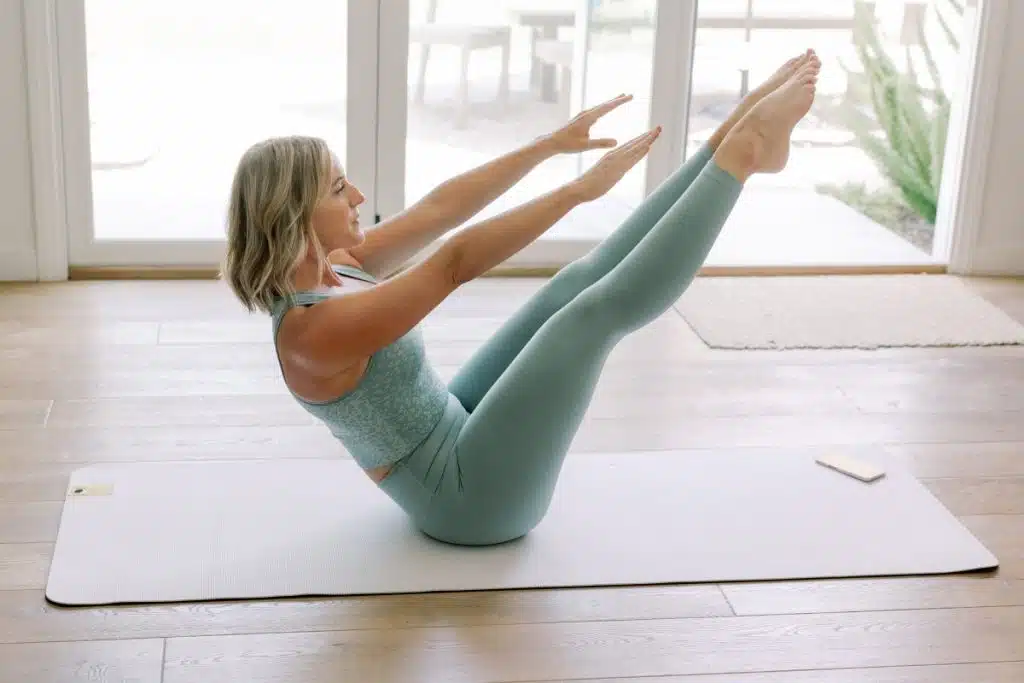Many of you have been doing Pilates with me for regularly over the past few months. And while I spend a lot of time cueing you through the exercises, I don’t often have an opportunity to expand on the principles that truly make Pilates the unique form of exercise that it is.
There are 6 essential principles in Pilates that are important to keep in mind as you dive deeper into your practice.
These principles were not created by Joseph Pilates himself, rather they were brought about by those who studied under him in an effort to preserve and spread his unique method of exercise.

The 6 Pilate Principles
1. Centering
This addresses the key component in Pilates that everything begins and ends with the center. Some people call this the core, others call it the “powerhouse.” All Pilates exercises are energized and powered from the center (you can read more about what “the core” includes in this post by Dr. Eric Goodman).
2. Concentration
Pilates is not an exercise method where you can show up and zone out. One should bring their full attention to each exercise and what is going on in the body to work efficiently, effectively and with intention.
3. Control
Every Pilates exercise is to be performed with full body control. Using momentum or rushing through exercises at the expense of form and function is not Pilates. Pilates requires control of both mind and body.
4. Precision
Exercises should be performed with precision and focus. The details matter. Working with precision will affect the muscles that you work and the effectiveness with which you work them. Failing to focus on the precise details will reduce the effectiveness of the method.
This is the beauty of Pilates. This is why we only have you do 8-10 repetitions rather than 30+. When done right, more is not better. In Pilates we work smarter, not harder.
5. Breath
Joseph Pilates encouraged full, intentional breathing in life and in exercise. The breath has the power to transform the body and mind. When practicing Pilates one should exercise the lungs by breathing deeply and synchronizing the breath with the movement at hand.
6. Flow
Pilates exercises should flow with grace and ease. Flowing through each exercise, from one exercise to the next and using all part of the body in graceful unison.
I’m curious, are you familiar with the Pilates Principles? Do you keep them in mind while taking class?
xo,
PS – you may also enjoy: how to become a Pilates instructor and 7 minute ‘energy burst’ Pilates workout.
PPS – If you want to dive more into your Pilates practice, join me in The Balanced Life Sisterhood! Click here to read our manifesto.











6 thoughts on “The Pilates Principles”
I just read about these concepts and have been making sure to incorporate them into my practice. I am gearing up to take a pilates certification course in the next couple of months. Any great recommendations for reading?
How exciting! I’d suggest reading Joseph Pilates’ Return To Life as well as Anatomy Trains. Both great prep books. Hope the training goes well! xo
I’ve actually never heard of the principles before, so am glad you made a post about them! The pilates sessions I did at my old gym did have a lot of focus on the powerhouse though, but I was never sure that was special for pilates as that class mixed pilates, yoga and tai chi together. 🙂
Glad this was helpful! It’s something that’s not often talked about in classes. 🙂
The principles were exactly what drew me to Pilates (that and the lack of torque on the knees). I wanted something that allowed for controlled movement to spare my joints, avoided my asthma triggers, and built a stronger core for in the saddle (and in general.) If I really want to zone out in exercise- there’s always going for a run.
I’m right there with you Katie! I do Pilates to connect me to my body and running to let my mind water. A perfect combo. 🙂